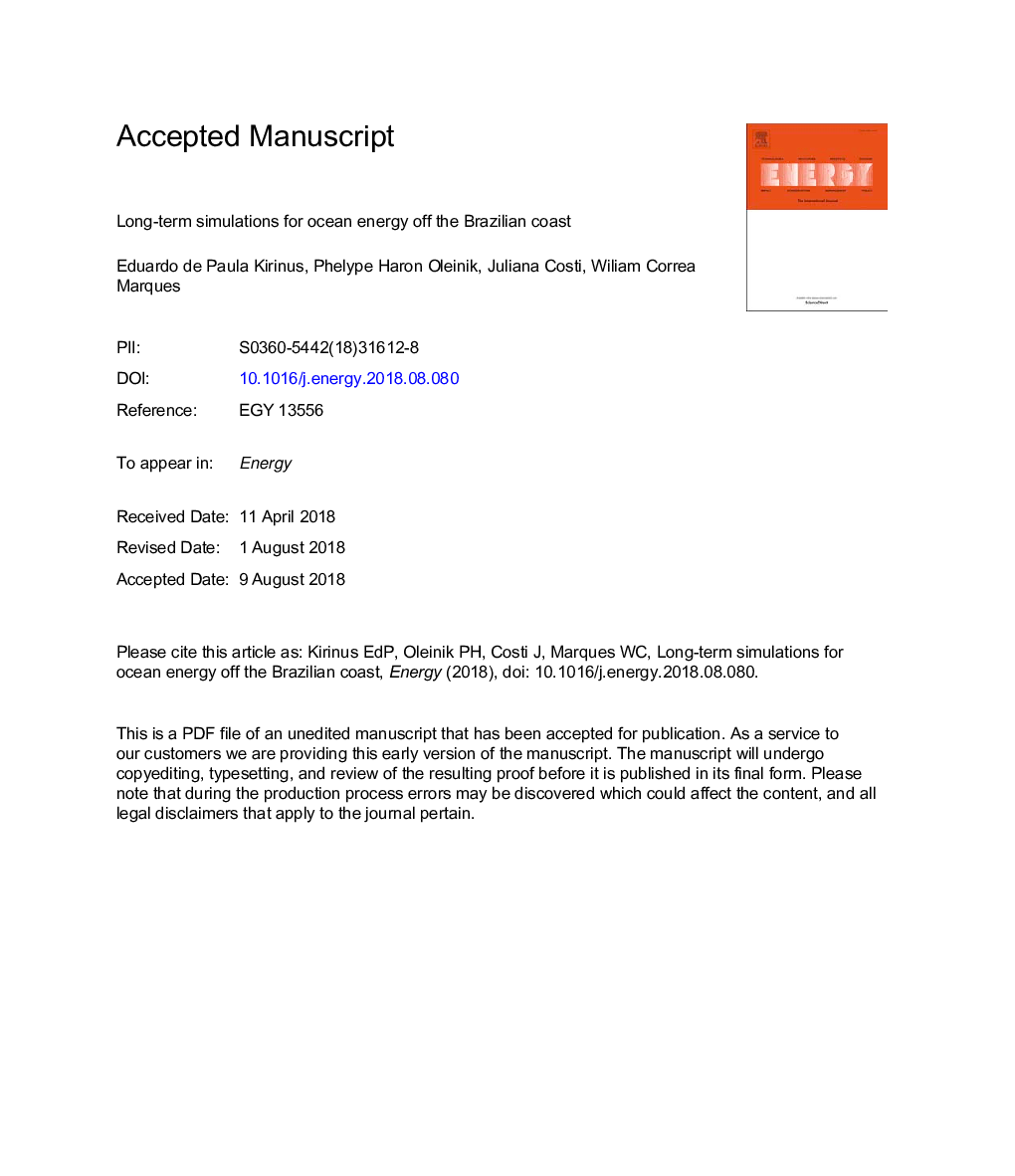| Article ID | Journal | Published Year | Pages | File Type |
|---|---|---|---|---|
| 8948741 | Energy | 2018 | 25 Pages |
Abstract
Waves and ocean currents have been widely researched worldwide as possible renewable energy sources. Recent findings related to viable energy sites with high power output focus on local dynamic impacts and disregard long-term viability. This study underlines the importance of resource assessment performed through long-term simulations and attempts to improve the understanding of how spatial-temporal variability controls the dynamic patterns of feasible sites for oceanic renewable energy. Hydrodynamic and spectral wave models Telemac-3d and TOMAWAC were performed over a 10-year period from 2003 to 2012. Sources of high current intensity and wave height were found in five sites around the Southern Brazilian Shelf (SBS) and the Southeast Brazil Bight (SBB) and were further analyzed for frequency of high occurrence, variability over months and seasons, and spatial and temporal variability. The results indicate that renewable energy from ocean currents has more stability for conversion in the SBS, while waves present better conditions in the SBB. The weaker seasons for energy conversion were autumn and summer, with the stronger seasons varying. Wave variability demonstrates a high correlation with atmospheric dynamics regarding the passage of frontal systems as opposed to currents that are mainly forced by local wind-driven conditions.
Related Topics
Physical Sciences and Engineering
Energy
Energy (General)
Authors
Eduardo de Paula Kirinus, Phelype Haron Oleinik, Juliana Costi, Wiliam Correa Marques,
